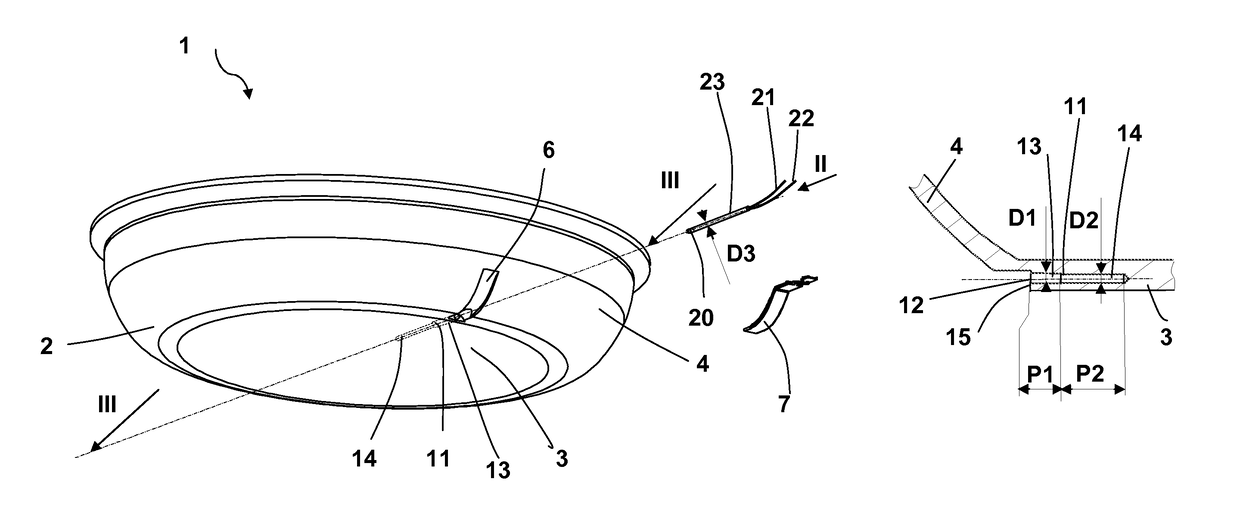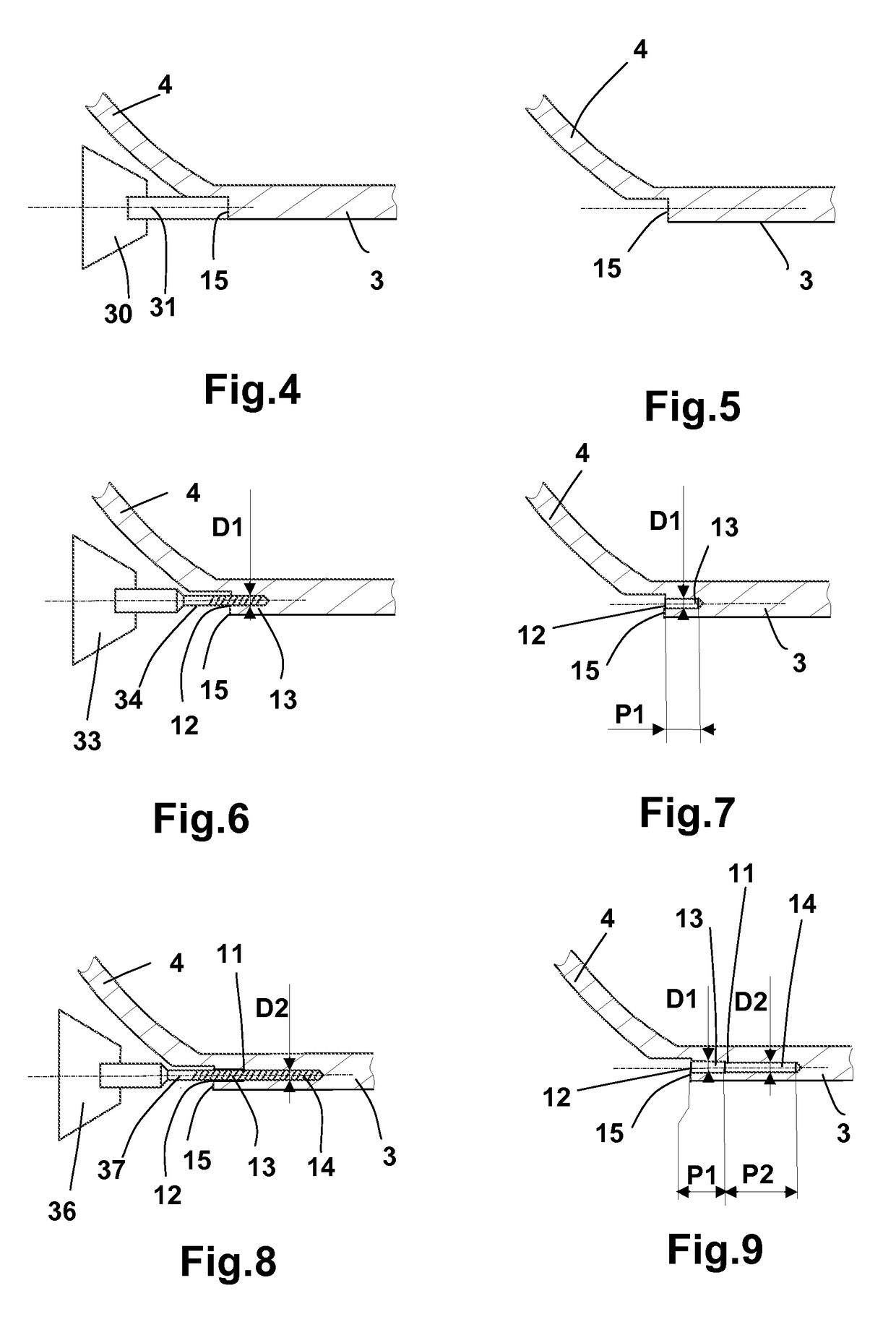Process for drilling a tunnel in which to place a sensor in a cooking vessel and vessel created by said process
a tunnel and sensor technology, applied in the field of tunnel drilling, can solve the problems that the drilling bit, by construction, is never perfectly rectilinear, and achieve the effect of improving the life of the drill bi
- Summary
- Abstract
- Description
- Claims
- Application Information
AI Technical Summary
Benefits of technology
Problems solved by technology
Method used
Image
Examples
Embodiment Construction
[0044]As can be seen in FIGS. 1 and 2, a bowl (2) of a cooking vessel (1) has of a bottom (3) and a side wall (4). The bowl (2) is made of aluminum, for example, by stamping a disc or by a casting operation. The bottom (3) has a thickness (e) equal to 4 millimeters, in which a tunnel (11) is arranged for the placement of a sensor (20). The placement tunnel (11) forms an opening (12) in the side wall (4) and extends from said opening (12), radially toward the center of the bottom (3). The placement tunnel (11) comprises, from the opening (12), a first portion (13) formed by a cylindrical hole of Diameter D1 (FIG. 9), and then a second portion (14) formed by a cylindrical hole of Diameter D2 (FIG. 9), Diameter D1 being greater than Diameter D2. The first and second portions (13, 14) have the same longitudinal axis.
[0045]The sensor (20), which can be seen in FIG. 1, is a temperature sensor, in particular, formed by an NTC or a thermocouple. The term NTC refers to a Negative Temperature...
PUM
| Property | Measurement | Unit |
|---|---|---|
| depth | aaaaa | aaaaa |
| depth | aaaaa | aaaaa |
| depth | aaaaa | aaaaa |
Abstract
Description
Claims
Application Information
 Login to View More
Login to View More - R&D
- Intellectual Property
- Life Sciences
- Materials
- Tech Scout
- Unparalleled Data Quality
- Higher Quality Content
- 60% Fewer Hallucinations
Browse by: Latest US Patents, China's latest patents, Technical Efficacy Thesaurus, Application Domain, Technology Topic, Popular Technical Reports.
© 2025 PatSnap. All rights reserved.Legal|Privacy policy|Modern Slavery Act Transparency Statement|Sitemap|About US| Contact US: help@patsnap.com



